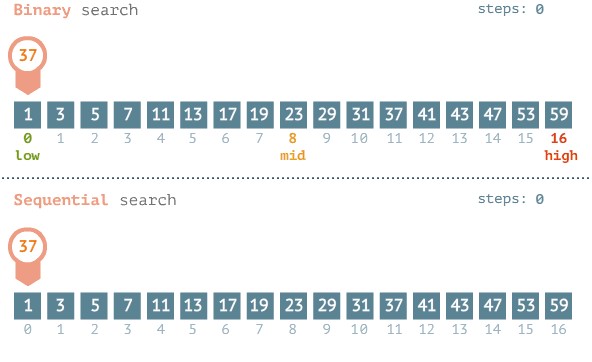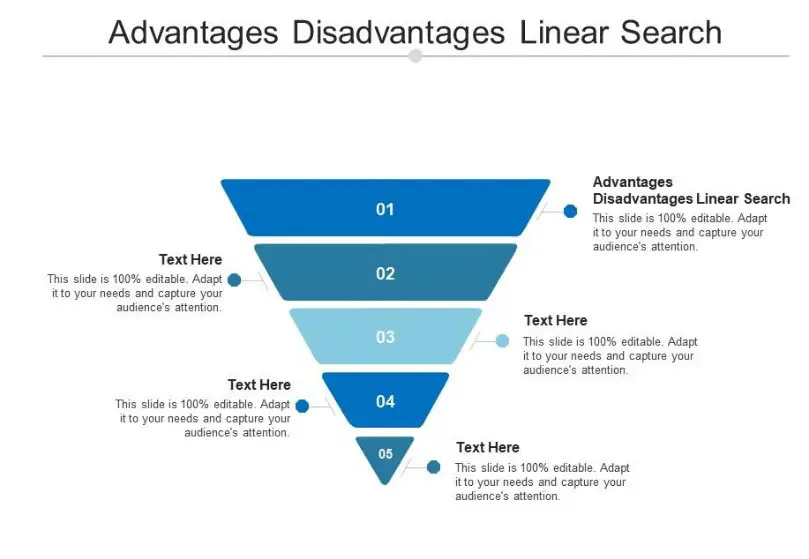Searching algorithms are one of the most important algorithms in computer science. In this article, we will take a look at two of the most popular searching algorithms – binary search and linear search.
We’ll discuss the differences between the two algorithms, the advantages and disadvantages of each, and when to use them. By the end of this article, you’ll have a better understanding of when to use each algorithm and why.
Advantages and disadvantages of binary search

Binary search and linear search are two popular algorithms used to find an item in an array. Both of these algorithms have their own advantages and disadvantages, and it is important to understand the differences between them to decide which one is better suited for the task at hand.
Linear search, on the other hand, can be used on any type of array, but it takes more time to execute. Binary search is also more memory efficient, while linear search requires more memory.
Ultimately, the choice of which algorithm to use depends on the specific requirements of the task.
Advantages and disadvantages of linear search

Linear search is a simple and straightforward algorithm that iterates through an array of items to find a specific value. It can be useful in cases where the data is small and the elements are few.
However, it is not the most efficient algorithm when the elements become more numerous. Binary search is an alternative algorithm which is much more efficient than linear search for larger datasets. Binary search divides the array into two parts and searches through each part separately until the desired value is found.
This method is much faster than linear search since it eliminates the need to traverse the entire array. The main difference between linear search and binary search is the speed of the search.
Binary search is much faster than linear search, particularly for large datasets.
Comparison of binary search and linear search
When it comes to searching for a particular item in a list or array, there are two main approaches to choose from: binary search and linear search. Both methods are effective, but understanding the differences between them can help you determine which one will be most efficient for your specific task. Binary search is a much faster and efficient method than linear search, as it works by repeatedly dividing the list in half until the desired item is found.
On the other hand, linear search simply looks for the item sequentially from start to finish. With binary search, the list must be sorted in order for it to work, while linear search can be used on an unsorted list.
Additionally, binary search requires more memory and computational power than linear search, which makes it better suited for larger datasets. Ultimately, the best search method to use depends on the size and organization of your data.
Use cases of binary search and linear search
When it comes to searching for an item in a collection of data, two of the most popular approaches are binary search and linear search. Both are efficient algorithms, but they have distinct differences.
Binary search is faster than linear search and requires fewer steps to complete. On the other hand, linear search is simpler and more intuitive to use.
To determine which approach is best for a given task, it is important to understand the use cases of each algorithm and the differences between them.
How to choose between binary search and linear search
Choosing between binary search and linear search can be a tricky decision. It all depends on the kind of data you are searching through and the complexity of the search.
Linear search is a straightforward approach to finding a specific item in a list or collection. It starts at one end of the list and searches each item sequentially until it finds the element or reaches the end of the list. Binary search, on the other hand, is a more advanced algorithm that works by repeatedly dividing the search space in half.
It begins by comparing the target value to the middle element of the list. If the target is not equal, it then searches the lower or upper half of the list depending on whether the target is lesser or greater than the middle element. Binary search is faster than linear search, but it only works when the list is sorted.
So, if you are searching through a sorted list, binary search is the way to go. However, if the list is unsorted, linear search is the better choice.
Final Touch
In conclusion, the key difference between binary search and linear search lies in the way they search for the target element. Binary search is a more efficient searching algorithm than linear search since it divides the search space in half on each iteration. Linear search, on the other hand, searches through each element one at a time until the target element is found.
Therefore, binary search is the more efficient approach when searching through large datasets.

